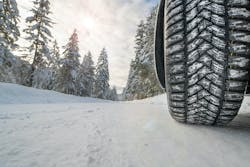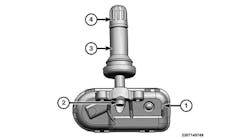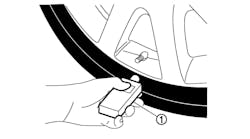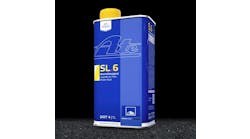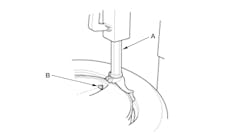Before you know it, the winter season will be upon us. It officially starts Dec. 21 and runs through March 20. So winter car care needs to start now.
Performing multi-point inspections is particularly crucial when harsh weather hits. What are the main points?
Gene Petersen can tell you. As tire program manager for Consumer Reports, he knows what consumers want and need during the winter months. That perspective can give you an edge when your customers drive into your bays after the temperature starts to drop. Why should they do all the work when you can do it for them?
Modern Tire Dealer asked Petersen what winterizing tips CR would pass along to its readers, which, we believe, will help you better understand the mindset of your customers.
Our belief is if you know what your customers are thinking, you will know how to not only serve them, but also exceed their expectations.
“First of all, I’d be remiss if I didn’t talk about tires,” he said. “Certainly, at the very least, consumers should check out the tires that are on their cars today. If they’re significantly worn, they might want to consider buying a new set of tires for winter. They can use a quarter, which helps define the tread depth in the tires. If you can see all of George Washington’s head, you’ve got 4/32nds or less in the tread.
“At that point, consumers might want to consider shopping for new tires. They may not need them right away, but for winter traction it’s best to consider thinking about shopping for new tires now.
“The caveat this year is many of our readers are interested in this all-weather category. Obviously, by far the most common type of tire is all-season. But these all-weather tires, which happen to be somewhere in between all-season and designated winter tires, can be used all year. There’s a real interest in having one tire do it all.
“Of course, dealers will want to make sure the tires are properly inflated,” he said. “As we know, as it gets colder. the inflation pressure does decrease — about one psi for every 10 degrees Fahrenheit. So that’s a good thing, to make sure it’s topped off.
“Also, (dealers should) make sure the tires are rotated, particularly for someone who has a front-wheel drive vehicle, where the front tires tend to do all the work and rear tires are along for the ride. It’s good to rotate those tires so they wear evenly and there’s good traction on all four wheel positions.”
Necessary accessories
Petersen next mentioned the need for consumers to check their batteries.
“As it gets cold out, (battery) efficiency decreases. We say at the very least, inspect the battery. Make sure the terminals are tight and clean. If it’s more than four years old, the consumer might consider having it checked and maybe replaced.
“Another thing to consider is windshield washer fluid. Consumers want to make sure that’s topped off. They will want to make sure they are using a winter mix. At least in Connecticut here, where our test track is located, retailers sell a winter mix that will stay liquid in very cold weather. That’s a good thing to consider.”
Windshield wipers should also be checked. But Petersen said consumers shouldn’t rely on the wipers to do all the work because the ice and snow can damage them. That is why he suggests each carries a good brush and ice scraper in the car.
Perhaps that is something you can sell or give away to your customers to make sure they keep their windows clear.
Dealers also can help out their customers by cleaning the vehicle’s lights “usually in the front of the car, for automatic emergency braking or a forward collision warning system,” said Petersen, as well as backup cameras, which are required on new models sold in the U.S. ■
